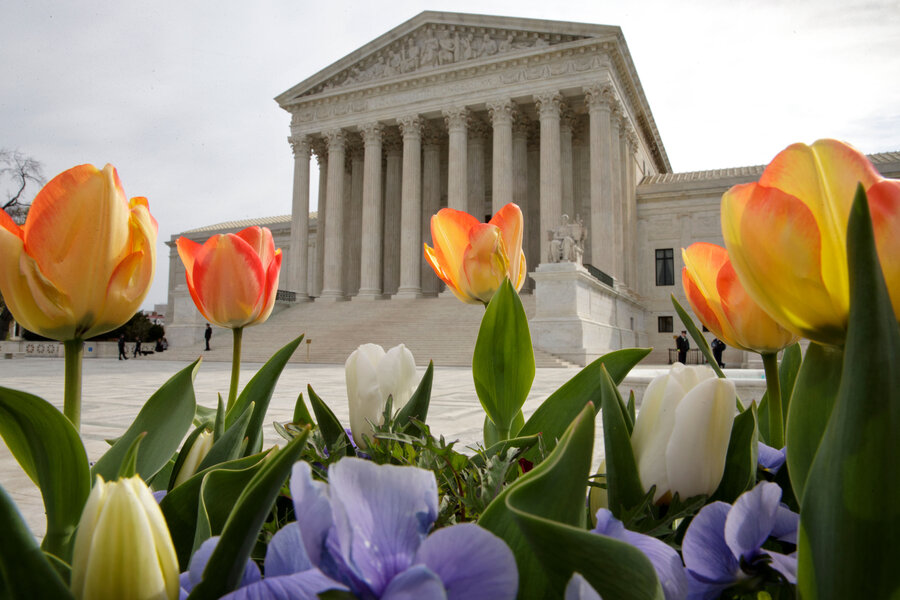What does Scalia's empty chair mean for the Supreme Court's case load?
Loading...
The death of US Supreme Court Justice Antonin Scalia on Feb. 13 may have forced the high court to be more discerning about the cases it takes on.
With an even number of justices presiding, as well as a fairly even ideological split, justices risk a split ruling on controversial cases.
The court appears to be choosing cases carefully, in an attempt to avoid the appearance of being hamstrung by the vacancy caused by Justice Antonin Scalia's death.
"It is beginning to look like the court is being especially selective in choosing which cases to grant," John Elwood, an attorney with the law firm Vinson & Elkins in Washington, D.C., who argues cases before the high court, told Reuters.
Although the court usually agrees to hear eight cases (for the next cycle) on average during the February-April period, this year it has agreed to hear just three, none of which appear to be particularly controversial.
In fact, the court has agreed to hear just eight cases for the October 2016 to June 2017 session, as opposed to the 70 cases typically heard during a session.
Although the Court may be hedging its bets for the future, its current caseload appears to be designed to show off the problems with an eight justice court.
The court has come to a tied 4-to-4 decision twice since Justice Scalia's death in February, and there are still more controversial cases on the docket.
Prior to Scalia's death, it appeared that the court would rule 5-4 in a decision that had the power to shape the future of unions. Without conservative Scalia on the bench, however, the court ruled 4-4 in a case regarding teachers unions in California.
Last week, the court suggested that both sides of a controversial birth control case involving Christian nonprofit employers and health care coverage for birth control, submit additional briefs. The court’s intent appeared to be to find a compromise. In the past, a nine justice court and an ideological imbalance likely would have meant a more definite decision.
The outcome of the Friedrichs v. California Teachers Association unions case disappointed plaintiffs, who plan to file a rehearing petition. They hope the case will be heard when the court is back at full strength.
"Our understanding in recent years on these types of cases is the court holds the petition until it can be decisively voted on by nine justices," said the Center for Individual Rights president Terry Pell.
Upcoming cases on abortion and the deportation of illegal immigrants could also split the court down the middle, an eventuality that the court dearly wants to avoid.
Last month, President Obama nominated centrist Judge Merrick Garland to fill the Supreme Court vacancy, though the Republican dominated Senate continues to postpone granting any Obama administration nominee a confirmation hearing.
This report contains material from Reuters.






